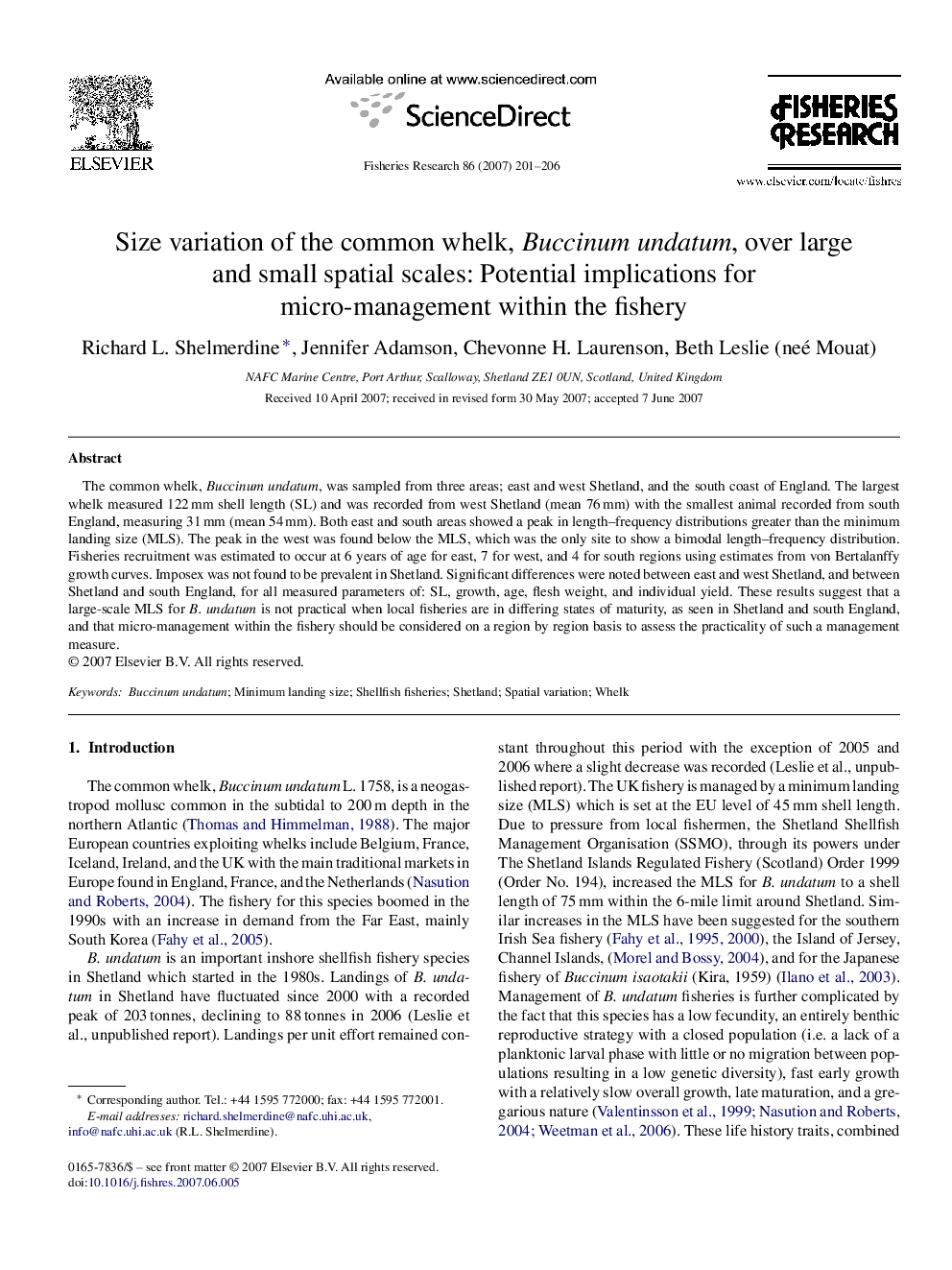| Article ID | Journal | Published Year | Pages | File Type |
|---|---|---|---|---|
| 4544673 | Fisheries Research | 2007 | 6 Pages |
The common whelk, Buccinum undatum, was sampled from three areas; east and west Shetland, and the south coast of England. The largest whelk measured 122 mm shell length (SL) and was recorded from west Shetland (mean 76 mm) with the smallest animal recorded from south England, measuring 31 mm (mean 54 mm). Both east and south areas showed a peak in length–frequency distributions greater than the minimum landing size (MLS). The peak in the west was found below the MLS, which was the only site to show a bimodal length–frequency distribution. Fisheries recruitment was estimated to occur at 6 years of age for east, 7 for west, and 4 for south regions using estimates from von Bertalanffy growth curves. Imposex was not found to be prevalent in Shetland. Significant differences were noted between east and west Shetland, and between Shetland and south England, for all measured parameters of: SL, growth, age, flesh weight, and individual yield. These results suggest that a large-scale MLS for B. undatum is not practical when local fisheries are in differing states of maturity, as seen in Shetland and south England, and that micro-management within the fishery should be considered on a region by region basis to assess the practicality of such a management measure.
